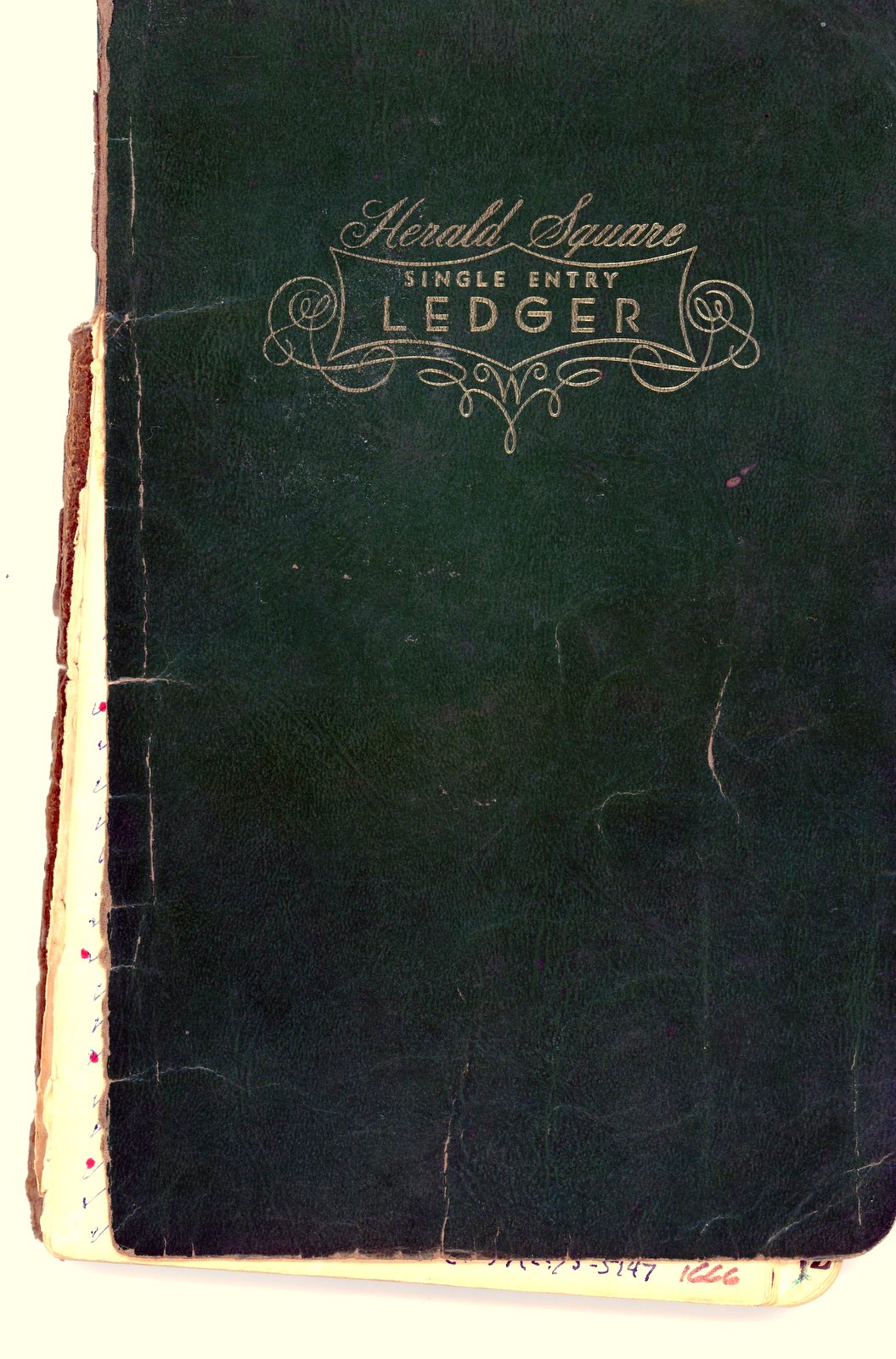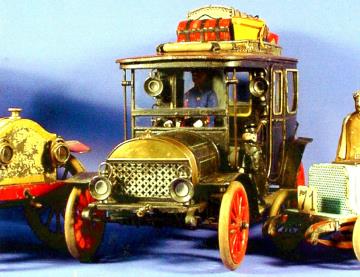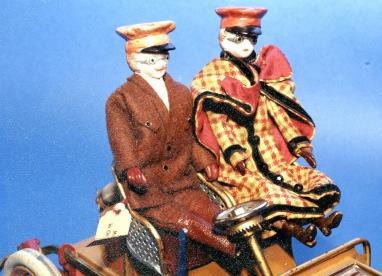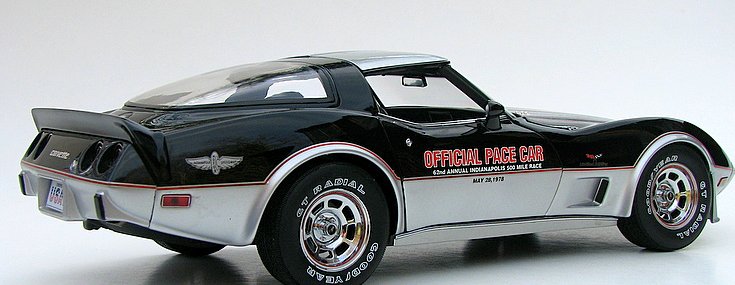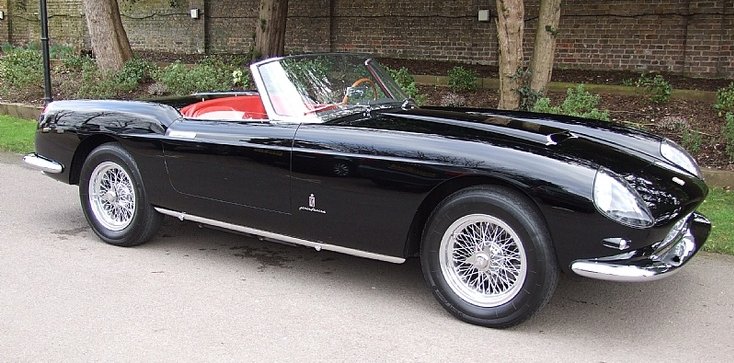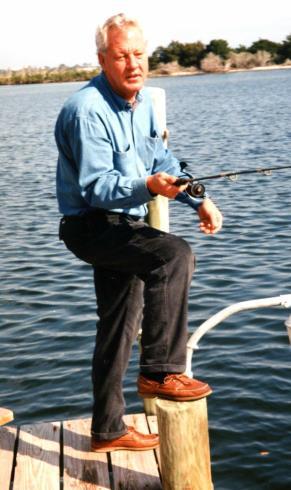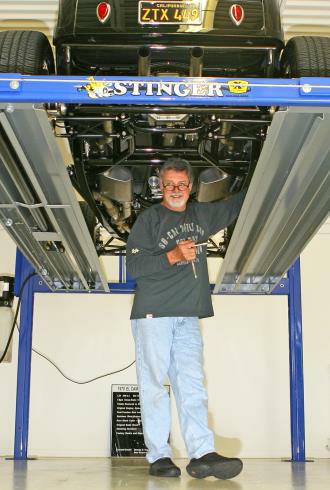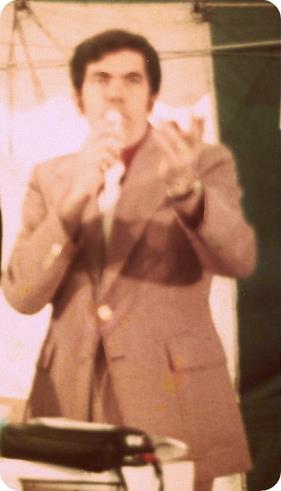 | ||||
651
MID-SEVENTIES, WORKING, LEARNING, & MORE WORK
It was amazing how quickly all the glitz and glamour of the past eight years ebbed away.
I had truly gone back to the very beginnings of my business training. Yep, all the way back to the relentless whippings from Bob Brooks at Penn Mutual Life Insurance.
(. . . Doesn’t matter when your last train leaves tonight Fink, you’re not going home till you’ve got five solid appointments for the coming week. I’ll stay right here with you, Fink. . .).
Through that relentless training, I had landed in the late seventies with one stellar asset. I had an incredibly strong telephone contact book with contact information for a vast number of people.
(. . . It was in the seventies that another wholesale dealer was sitting with a salesman whose desk was near mine.
I had gotten up to go out into the shop, and my contact book was sitting on my desk. The wholesaler said to the salesman:
“If you can heist that phone book of his, I’ll give you $1,000 . . .”
Jack had worked with me at Drexel. He turned him down. . .)
With virtually no overhead, and now completely devoid of any illusions of grandeur, I slowly felt the edges of warmth returning to my bones and was seeing that the monies that I earned were largely staying with me and the ground was becoming stable under me.
If I sold an automobile or two, in the evening at home, I’d carefully enter the sale and the result in a small notebook. As basic as that seems, it may have been the first time in my “automotive” life where I tracked something from start to finish. Seems almost silly to read those words, but it was true.
Chapter 23
652
Those beginning entries were a modest record of my climb back. As time passed, I could watch the numbers slowly growing.
I’ve kept those early journals like the one shown. Even today, from time to time, when I may find myself thinking I’m pretty hot stuff, I will take a moment and look back through an early record book.
I didn’t have to pay any personnel, body shop bills, buy parts for racing cars, air fares to Indianapolis, France, Florida, Texas, or California. There was no rent to pay for two company commercial properties, no bills with Luigi Chinetti, dinners for large gatherings, or any need to disperse the stupid amounts of money one would expend “putting on the dog!!”
(. . .Yeah, I know that expression is out of the thirties, but so am I . . .)
ANOTHER GLIMMER OF HOPE'
For those of you who have had to face the misery of defeat, the agony of divorce, and the despair one can feel during those dark days, I have a brilliant glimmer of hope to impart.
In the midst of the fallout of losing my business, and virtually, my children, and realizing that I had to haul myself up and begin life again, one of the best things in my entire life occurred. . . I met a girl. Not only a girl, but a beautiful, intelligent, talented, warm and gracious Lady, and I fell head over heels in love.
Marilyn had been my wife’s tennis partner in the past, but I barely knew her. Then one Sunday, my wife and I had played tennis with another couple. I had enjoyed the match. My wife didn’t. As soon as we were in the house, my fire breathing spouse came down on me like a house of bricks.
She would no longer play the game of tennis with me. I was deemed a “street player”, an embarrassment to her, etc., etc.
653
I soon forgot about the matter . . . simply another Sunday, just a different vitriolic outburst.
Shortly thereafter though, she put Marilyn on the spot by asking her, in front of me, if she would play a few games with me.
(I held by breath. Would this actually happen???)
Marilyn graciously consented, and we did play now and then during that summer. Marilyn was a crack tennis player. I never took a set from her!
Later, when all the Hell broke loose, the final “toss out” happened, plus that very “dark” winter arrived, we lost touch with each other.
In January of the next year, though, still with that “66 cents” in my pocket, I agonized and agonized about trying to ask her out.
Finally, (. . . yeah, it surely did take extra effort!.), I dared, and she, unsuspecting, foolish girl, accepted.
Considering my “66 cent” dilemma, how did I plan to execute any sort of dinner date?
Here’s how:
Ronnie Tzirlin owed me $250 on a deal I had done. He was going to be at Ray Cardonick’s place that evening which was in the old Auto Enterprises building. I had chosen a restaurant near there.
You can’t imagine the anxiety and all of the . . .
“. . . Sorry Kirk, Ronnie’s not here. He had to . . .” scenarios that spun through my head on the drive over to Flourtown with Marilyn. However, Ronnie, always good to his word, was there with the money.
The end result was that this precious, kind and gentle, artist has been my wife and best friend for the last 40 plus years, sharing the rest of the flaming fallout, the days of “66 cents”, the ups and downs of the obsessive life, chasing and collecting all manner of automobiles, automobilia, motorcycles, antique toys, hot rods and tether cars.
Marilyn took my hand, and my heart, and we did it together.
So, there you go. Your happiness truly can be around the next corner.
Never give up runnin’ down your dream!
654
A WHOLE NEW ADDICTION . . .
It was either late in ’76 0r early 1977. I had my oldest son, Geoff, with me for a Saturday. For one reason or another we drove all the way out into Lancaster County. I spotted a large sign and a good many vehicles parked at a sprawling antique market. The business was called Renningers.
It seemed like it might be fun to see what the place was all about. Geoff and I wandered through the sprawling ramshackle buildings, my mind largely on things other than antiques. Geoff on the other hand was having the time of his young life. He was appreciating all manner of “antiques” and that pleased me no end.
It had been a pretty hellish few years for the children, which was disgraceful. But here was Geoff:
“Dad, look at this, it’s really cool!” He had picked up a chrome plated trim piece that spelled out “Bel Air” from a sixties Chevrolet. I bought it for him and in so doing it just cranked his enthusiasm up for more “really neat” items. From that point on, our pace through Renningers slowed to a crawl and that was fine. Geoff was having fun.
Near the end of the afternoon, we wandered into a building that offered antiques at a considerably higher grade than we had seen so far. In that building Geoff slowed to a near standstill, being careful to examine virtually every scrap of merchandise being offered. He was going through a particularly well stocked dealer’s booth when I turned around and came upon the booth of Marvin and Fran Silverstein.
655
OMG, . . . HERE HE GOES AGAIN!!
I was just generally looking over their offerings, when my eyes landed on an antique toy Overland bus, made in the nineteen thirties of pressed steel. The color and condition were essentially the same as the example shown below. Close to twenty inches in length it managed to really capture my interest.
I asked Marvin Silverstein to tell me a bit about his bus. It was an antique, he said, made of pressed steel in the nineteen thirties.
“Made by a company named Steelcraft. Quite rare.” Marvin said.
“How much is it?” I asked.
(. . . What are you doing, boy? It’s of no concern to you how much the man wants for his toy. . .)
“$50.”. . . Said Marvin. Before I could skulk away, Marvin had said he could take . . .“$45.”
Ever the first to fire, the irrational side of my brain kicked in and I said:
“Okay, I’ll take it along.”
Forty five dollars would have been better served buying a replacement for my sagging card table which was serving as a dining table in my small apartment. Or the same $45 could have easily purchased a used bed frame to get my sorry ass mattress off the floor!
(. . . So, where was “home” at that modest juncture in my life? It consisted of three small rooms in a local semi detached apartment complex in Valley Forge, Pennsylvania . . .)
656
Marvin wrapped up the bus, and as Geoff was still entertained, I walked just a few feet up the aisle and came upon a booth that absolutely stopped me in my tracks. The cases were lighted, but the booth was unmanned. In one good sized cabinet there were three or four of the most amazing antique toy automobiles. They were good sized; it was obvious that they were tin toys from the early nineteen hundreds. One was lithographed; the other two were beautifully enameled in two shades, delicate pinstriping, beveled glass and one had a luggage rack! Two of the antique tin autos had Edwardian period drivers and passengers! They had wind-up clockwork mechanisms.
And on a shelf nearby, there was another one, but it depicted an early Vanderbilt Cup racer with two marvelous Goggled figures one being the driver and the other his Lady, dressed for a swift ride. They were utterly breathtaking.
I drifted back to Marvin and asked about the booth.
“Oh, that’s Jean and Bob Lowe’s booth. They have really great antique toys and plenty expensive too.”
I looked them over again carefully for a long time.
Finally I brought Geoffrey back to planet earth and we made our way home. Geoff loved our bus and examined it carefully most of the way home.
That Saturday afternoon was the spark that lit a runaway blaze of enthusiasm in me for early fine automotive toys with an insatiable desire for early toy racing cars.
It was, and remains today, an irresistible quest for me. As time goes by you’ll join us in some antique toy adventures that rival the exciting world of collector automobiles.
657
When I dropped Geoff off, his brother Christopher was there working on his Honda 50 motorcycle. On a visitation day a while back, I had taken Chris to Devon Honda to look over the selection of motorcycles. I visited with the owner, Dave Kirby while Chris was eying the smaller bikes.
Chris gave me such an earnest sales pitch that I bought him a Honda 50.
Over several subsequent visits, Chris and I “modified” the bike for “speed!”
Soon we found a good open area to ride. The area adjoined an industrial park. Others had ridden their bikes there, and in fact they had worn the turf into a fun and sane little race track.
Most Sundays, when my visitation with Chris came up, he and I took the motorcycle down to the “track.” Chris at age 13 developed quickly into a very enthusiastic and quick Moto-cross rider.
You have to understand that when I was allowed to have any time to visit with the children, the children were to be collected outside of the house.
“No, you may not show him what you did with the trains in the basement!”
I was allowed on the driveway surface and in the garage itself. But I was not to enter the home under any conditions.
It made it terribly difficult for me to spend time with Elizabeth who was only nine, but we all found some bit of “space.”
1978 CORVETTE PACE CARS
In the fall of 1977, the Chevrolet Corvette was chosen, for the first time, to pace the Indianapolis 500 in May of 1978. It was the 25th anniversary for Corvette.
Then word came out that Chevrolet would be manufacturing 6,502 Special Edition Indianapolis Pace Cars. Simply put, one example per dealer!
658
The pace Cars would come in a quite striking paint combination, unique to the model, of black over silver separated by a bold red pinstripe. You could get the car in a 4 speed stick shift, or an automatic. The better engine was the L-82, though the car was also offered with the less powerful L-48 engine. The base price was $13,665. All manner of options were available at additional cost.
Just one for each dealer . . .
Going into early 1978, you’d hear scattered talk about the possible investment aspect of the cars, but it was just idle chatter until Monday the 27th of March 1978.
On that date The Wall Street Journal published a front page article hailing the limited edition Corvette Pace cars as investment instruments that were certainly going to rise sharply in value.
I didn’t see that article, but heard about it from others for the next few days. Wednesday afternoon of that week, on my way home, I stopped by my local Chevrolet dealer who happened to be David Penske.
And yes, David had a brand spanking new L-82 Black, stick shift Pace Car right there on his showroom floor and yes he would sell it me, but there’d be no friendly discount.
Full list, thank you very much!
“Okay, I’ll take it.” I said.
That Friday morning I drove the car to the Manheim Auto Auction where I was doing business both as a buyer and a seller every week at that point. Manheim was the big weekly, dealer only, wholesale auto auction . . . a no-nonsense, fast paced automobile auction with, at that time, five or six auction lanes selling simultaneously.
659
If you chose to be at Manheim, you’d best pay attention and be on your toes.
I pulled in early in the morning and gave the traffic director $20 to let me park the Pace car right at the head of the entrance to the auction. I was a good poultry customer of his, after all. On occasion I would purchase one of his fresh chickens to take home! Remember, we were right in the heart of the Lancaster County farm country.
Where I parked, no one could drive on the Manheim property without driving right past the Pace Car.
I went inside and secured a sale number for late in the day. It wasn’t long till everyone at Manheim knew it was my car.
“How much is it?”
“I’m going to run it through the sale.” I’d say.
“Say a number.”
“No, I’m going to run it.”
The car was set to go through the auction lane at about three PM. Around two a young man approached me and made a particularly earnest appeal for the car.
“Twice the list price., $28,600,” I said.
“I’ll take it,” he said, and we walked over to the sales desk and fifty guys saw what was happening. I signed the slip and the car was sold.
Not twenty minutes later, over the PA system:
“Kirk White to the office, Kirk White to the Office!”
The office meant Manheim’s top dog who went by the unlikely moniker of “Whitey!”
“We’re not processing this sale,” Whitey said brandishing the paperwork.
660
“You can’t sell a car here for twice the list price.” Whitey had the buyer in the room too. I should mention the young buyer looked like he wasn’t old enough to be transacting business of any kind, but he and his Dad evidently owned a dealership there in central Pennsylvania.
I fought back hard, saying I could sell the car for any amount I wished and the buyer was free to pay whatever he wished.
“Manheim is functioning as a pure auction conduit. Period,” I said.
Well, after heated talk back and forth, Manheim finally agreed to process the sale, but they weren’t going to give me the sale funds for two weeks to allow ample time for any of the players (i.e. the buyer, to come out of the ether!)
With a bump or two, it seemed we were off on the beginning of the “Get rich with the Pace Cars scheme.”
The following week I showed up at Manheim with four more Pace cars! But wait, there were at least seven or eight more on the auction grounds. Now it became a matter of everyone, for God’s sake, holding their ground!
We had to keep the market up there! A dealer from Reading was there with five of the damn things, and he had the earliest sale numbers. Those of us who were there with “Pacers,” urged that dealer to hold the line. For Heaven sake, don’t let the market slip back!
The Reading dealer’s cars went in to the auction lane first, and the auctioneer ran out of money at 22 grand on the first one!
We were all holding our breath hoping he would “no sale” the car, but the Reading dealer, who was up on the auction block, caved in and sold the car thus putting the Pace Car market in a nose down descent.
Most of the cars that were there that second week had been purchased at prices well above list.
661
Based on the week before the dive, things tightened up. My four cars went through later in the day. I made $300 on this one, $700 on that one, $350 on the next, and lunch money on the last one.
Those of us that were in the game had committed to Chevrolet dealers to buy additional inbound pace cars, and I had four more cars that came in over the course of the next several weeks.
One of the cars, purely by accident, came through the Scranton, Pennsylvania Chevy dealer. It was a plain Jane L-48.
But it carried serial number 004. It was the very first Pace Car released for public sale. The Scranton dealer just happened to be in the proper rotation and the oo4 car went to him.
(I’m expecting a whole lot of grief over the correctness of this number, but it was the very first car sent out to the buying public. GM retained #1. #2 was the actual Indianapolis 500 pace car, and #3 went to the winner of the Indianapolis 500.)
It was less than three months after the introduction of the 25th Anniversary Corvette pace cars, and no one wanted one. My final four Pace Cars sat quietly in the basement of Blenheim Motors.
Then one bright Morning, David Penske called. David mentioned that a pal of his, a major Chevrolet dealer in Los Angeles, had secured the very last Corvette pace car for his “collection!”
“Collection” was always a magic “buzz” word for those of us in the selling end of things.
“Do you think he may be interested in the first car released for public sale?” I asked.
“It’s worth you calling him. He’s all about important serial numbers.” said David.
662
I called the dealer in LA and told him what I had. He needed to verify what I was telling him and said he would call me back.
Yeah, well, he called back way too quickly. Yep, he was a player for my car.
Suddenly, all the gears meshed and I had an idea . . .
“Okay, I told him, here’s the deal. I will sell you number “one” but you’ll also be buying my other three to get that number one “to the public” car.
(. . . What are you doing, Kirk? . . .)
I held the phone away from my ear, thinking this guy was going to tell me to . . . well, you know what.
“Okay,” he said, and two days later four tan fit California surfer types show up at Blenheim Motors.
Two girls, two boys. The girls were gorgeous. They’d brought separate Cashier’s checks for each car, and they were all set to drive the cars back to California!
“That’s fine with me,” I said and we got the four cars out of the dungeon.
One of the girls asked if I had tags for the cars.
“You don’t have dealer or transport tags with you?” I asked.
Well, no, they didn’t, and this is where it got to be fun. The shop two doors down from the agency housed a sign painter! After a call or two back to LA, the sign painter was able to do up four proper California dealer tags that were totally correct, simply on a different material!
It was great to watch the kids drive the final four Pace Cars into the sunset!
Talk about catchin’ a break . . .
663
ONE THAT ALMOST GOT AWAY
Early one evening I happened to be driving to Baltimore to buy some very early Marklin antique toy trains. I had become hugely interested in Antique toys and the gas engined tether racers of the pre and post war period.
I’d actually found that dealing in antique toys was astonishingly lucrative and they didn’t require arranging some type of transport!
That aside, my six pound cell phone rang. It was my dealer friend David Baskin. David was a sharp European car wholesaler out of Philadelphia and he covered a lot of ground.
Did I have any interest in a Ferrari cabriolet he’d come across that day, oddly enough in Baltimore. He told me it was a tired car, but low mileage.
“No, I don’t think so . . .”
A Second Series Ferrari 250 cabriolet was scarcely saleable at that point, heavy, awkward, and altogether a tough sell.
I thanked David for the call, but just before hanging up, enough of my brain engaged to ask one last question.
“Did the car have wind wings?
“No, I’m certain it didn’t.” David said.
Almost caught you napping, Whitey!
“I’m on my way to Baltimore, I’ll take a look. I phoned the number and a very nice lady answered. It wasn’t that far from where I was on I-95 coming into Baltimore. My directions took me to a very nice neighborhood.
Yep, it was one of the quite rare and beautiful Pinin Farina coachbuilt 250 GT Cabriolet, Series 1, in a dark red, tucked away in the back of the garage. Covered headlamps, all the right bits and pieces. The serial number was 1181 . . .
664
It hadn’t run in years. The lady told me that her late husband had a major drinking problem and she grew weary of getting calls at all hours of the night or early hours of a morning telling her that the Ferrari was in “so and so’s” yard or bushes with her husband passed out behind the wheel.
She reached a point where she simply couldn’t put up with it any longer. She called their mechanic who maintained the car and asked him to effectively disable the Ferrari.
At that point she handed me the distributor rotor and said: “This is what he gave me and that piece put a stop to the car being used . . .” she said.
She had related the story with a great deal of sadness. I told her I would return the following week with a mechanic, fresh battery, etc.
She wanted $28,000 for the Ferrari. Well, she knew how to put the Ferrari on the money! The car reminded me enough of my California spider that I told her we could do that, subject to the Ferrari running reasonably well.
The mileage was in the low twenty thousands.
We came back and the car immediately lit up. In driving the car, I quickly discovered that the clutch was completely fried. I could scarcely drive the Ferrari on the level streets.
We adjusted the price a thousand dollars for the clutch replacement, and brought the car back to Philadelphia. It cleaned up like a million bucks and I had a great time driving the Ferrari!
Several dealers expressed a moderate interest in the car, but not quite enough to write a check!
I spent the better part of a year trying to sell that car and couldn’t get it done!
One morning Ronnie Tzirlin asked what I had in an “interesting, exotic” car and I told him about Series 1 cabriolet.
“How much is it?” he asked.
665
“$32,000” I said, after a year hoping to walk away with a ham sandwich.
“Yeah, OK, send it in, I’ll buy the car . . .”
Ronnie had the car for one f’ing year and took back $32,000 from his Uncle, Norman Wolgin.
(. . .As an aside, a good many times when you pull up the history on these “important” Ferrari automobiles, owners like Ronnie and I are swept under the rug. “Street players” like Tzirlin and White are omitted from the history. The history of Ferrari #1181 shows the car passing directly from the Baltimore widow to Norman Wolgin. In the rarified Ferrari collector world, no one wants to hear that #1181 lay unsold with Kirk White for a year and subsequently languished on Jerome Avenue in the Bronx for another year! )
In the end, the Ferrari was purchased from Bill Kontes at the Checkered Flag, and was enjoyed for many years by my friend Glenn Munger!
As I recall the last time it was sold, it was well north of five million dollars!
DOWNSHIFTING . . .
We have had a great deal of fun over the course of the last year, and plan to continue with these Chapters.
Two changes will take place:
1.) THE STORIES . . .
The past year has brought you stories that have largely unfolded in a chronological order. Subsequent chapters will not attempt to maintain that order.
From here forward, a great many topics will be covered:
European Vintage motorcycles among them, along with many, many additional European Car tales.
The antique toy and early tether racing car business, both of which have brought some incredibly fascinating experiences and stories!
And, of course, I return to the hot rods in a very big way.
2.) CHAPTER SCHEDULING . . .
It has become increasing difficult to work within the present “every two weeks” schedule. Not just for me, but the pressure on both Victoria and Marilyn is beginning to become oppressive.
The next chapter, however, will be published on February 16.
Subsequent Chapters will be published every three to four weeks. Each date will be announced well in advance. I would urge all of you who wish to continue with us to email me and we can place you on the mailing list.
Leonard, our ill behaved mascot dog, will continue to insult me while notifying you of each upcoming chapter. Leonard, is always on either of our websites, plus the “Constant Contact” mailers, and Facebook.
AND FINALLY, . . .
In the past three weeks I have lost three very dear friends.
Heb Fricke: Heb was my oldest friend and he is all over the beginning chapters of “Don’t Wash Mine”. Heb was the most giving and joyful person I have ever known.
Pete Chapouris: In addition to being one of America’s premier hot rodders, Pete and his wonderful wife Carol were great friends of both Marilyn and I. You will come to know him in our coming chapters.
Omar Landis: A great friend, mentor and still the best auctioneer I’ve had the pleasure to work with. A lot of credit for where the Classic Car auction business sits today is thanks to Omar Landis.
Credit Steve Robertson


